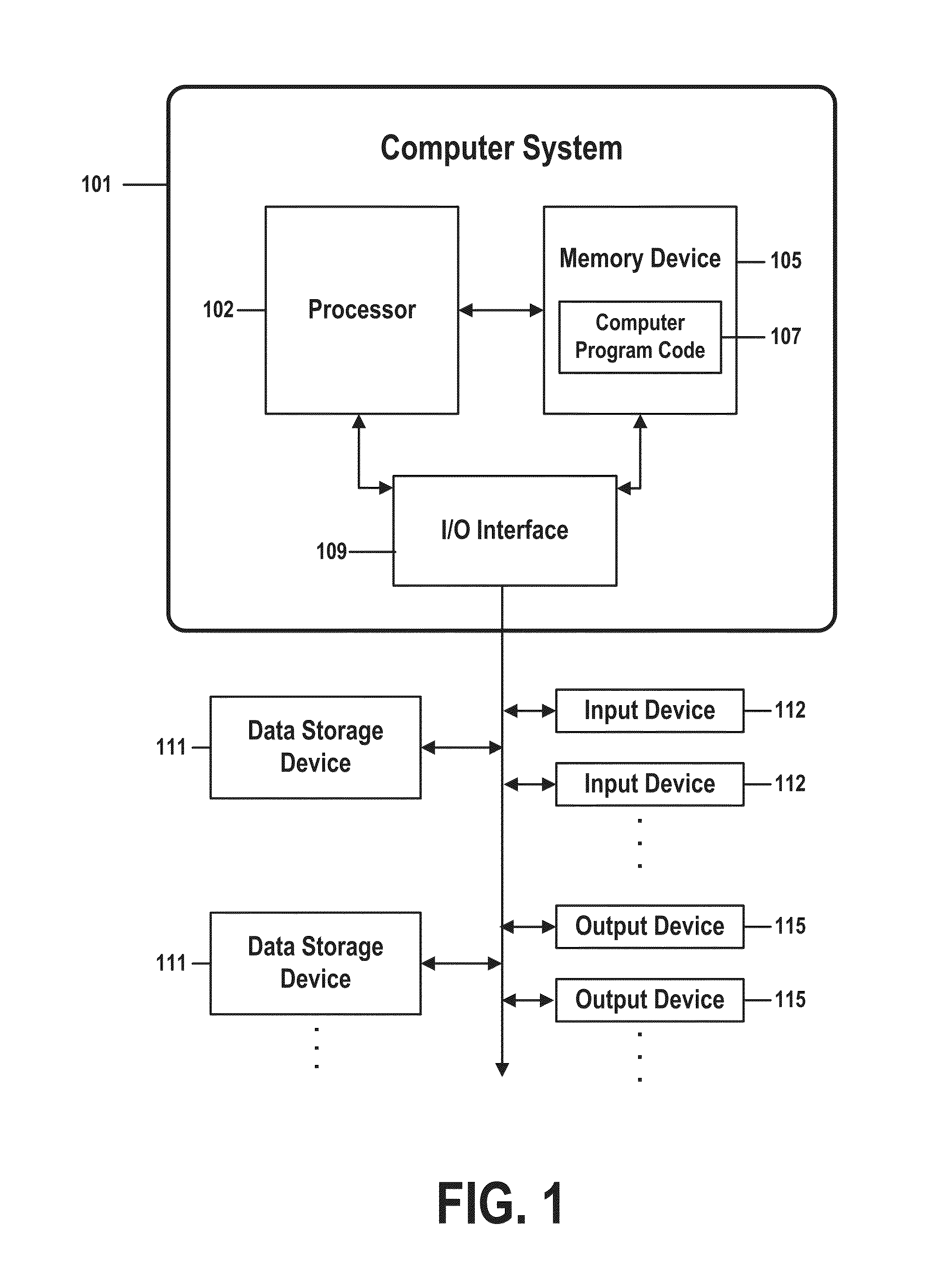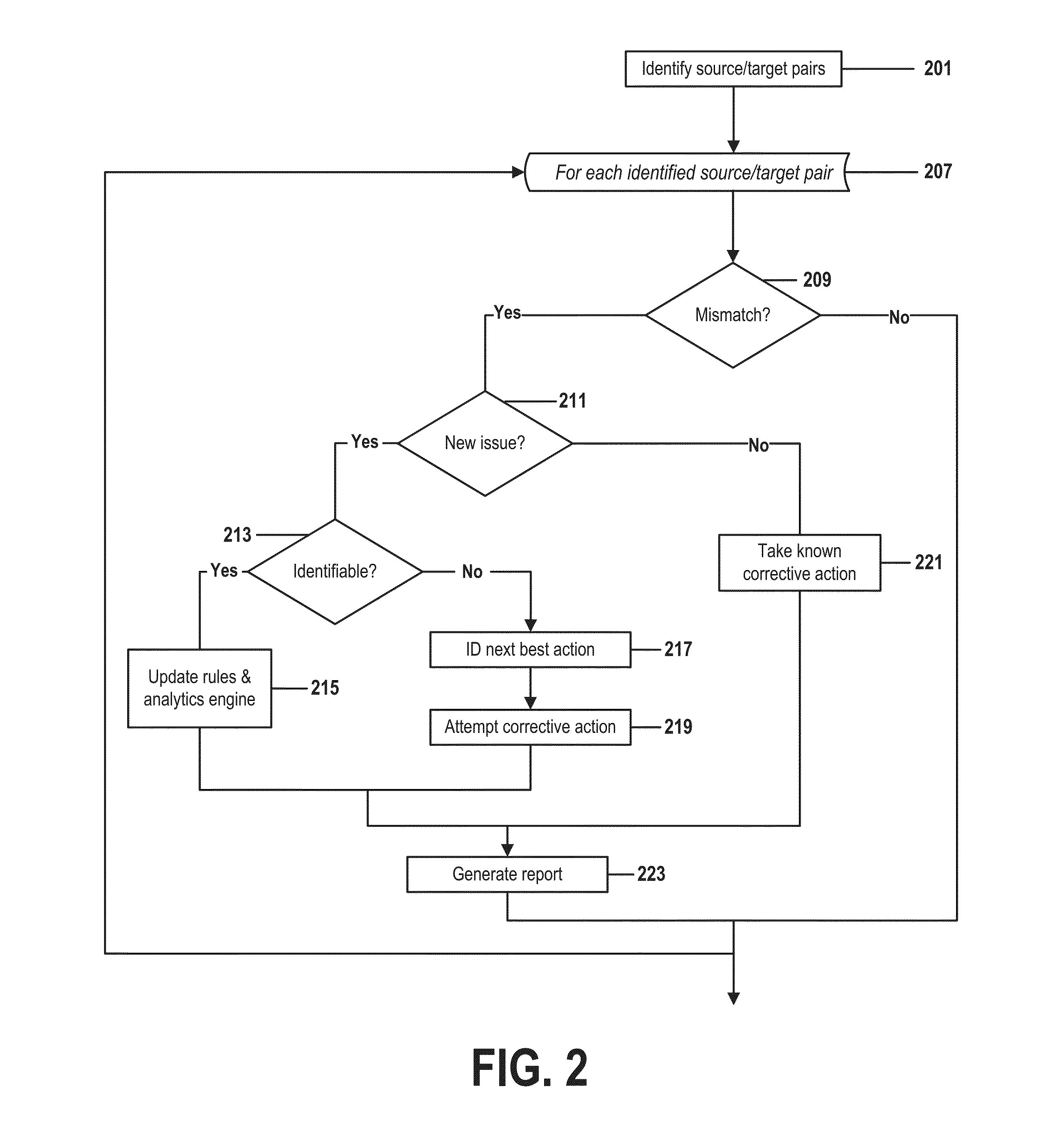Automatically self-learning bidirectional synchronization of a source system and a target system
a source system and target system technology, applied in knowledge representation, instruments, computing models, etc., can solve problems such as resource-intensive, complicated maintenance of synchronization rules, and rule failure to identify correct synchronization procedures
- Summary
- Abstract
- Description
- Claims
- Application Information
AI Technical Summary
Benefits of technology
Problems solved by technology
Method used
Image
Examples
Embodiment Construction
[0028]Embodiments of the present invention automate the task of auditing and correcting synchronization rules that define procedures for keeping two or more systems synchronized. Each of these systems may comprise a combination of one or more software applications, computer systems, other computerized entities, other electronic entities, or one or more components of one or more communications infrastructures.
[0029]One way in which such systems may be synchronized is by means of automatically generated messages that instruct a monitoring intermediary entity to update data stored by a second, or “target” system in response to a change to data stored by a first, or “source” system.
[0030]In one example, if a user changes her account number in an account-tracking module of a source system, a message documenting that number-changing event may be sent to a target system, or to an third-party “intermediary” monitoring entity. This event message may be generated by the source system or by th...
PUM
 Login to View More
Login to View More Abstract
Description
Claims
Application Information
 Login to View More
Login to View More - R&D
- Intellectual Property
- Life Sciences
- Materials
- Tech Scout
- Unparalleled Data Quality
- Higher Quality Content
- 60% Fewer Hallucinations
Browse by: Latest US Patents, China's latest patents, Technical Efficacy Thesaurus, Application Domain, Technology Topic, Popular Technical Reports.
© 2025 PatSnap. All rights reserved.Legal|Privacy policy|Modern Slavery Act Transparency Statement|Sitemap|About US| Contact US: help@patsnap.com



